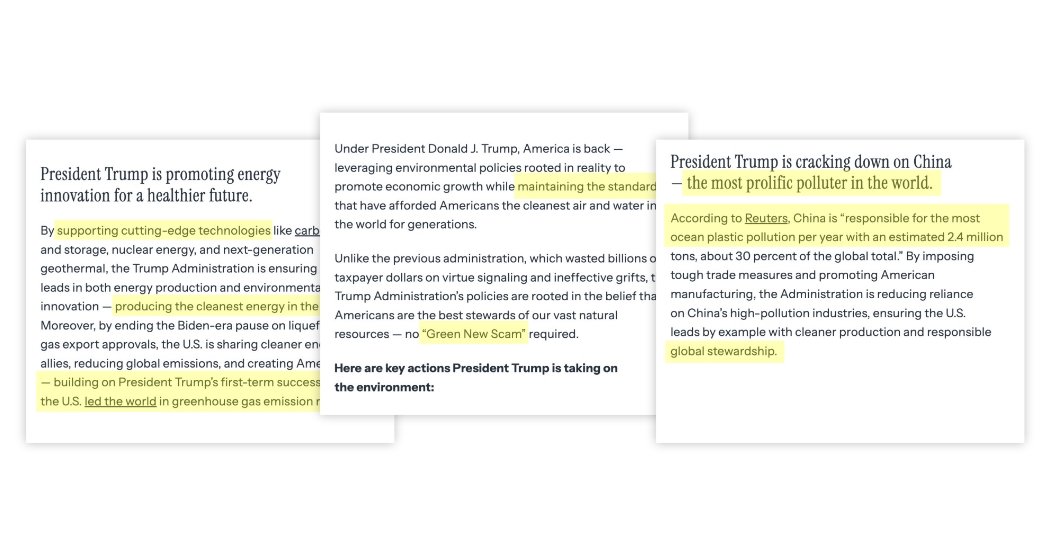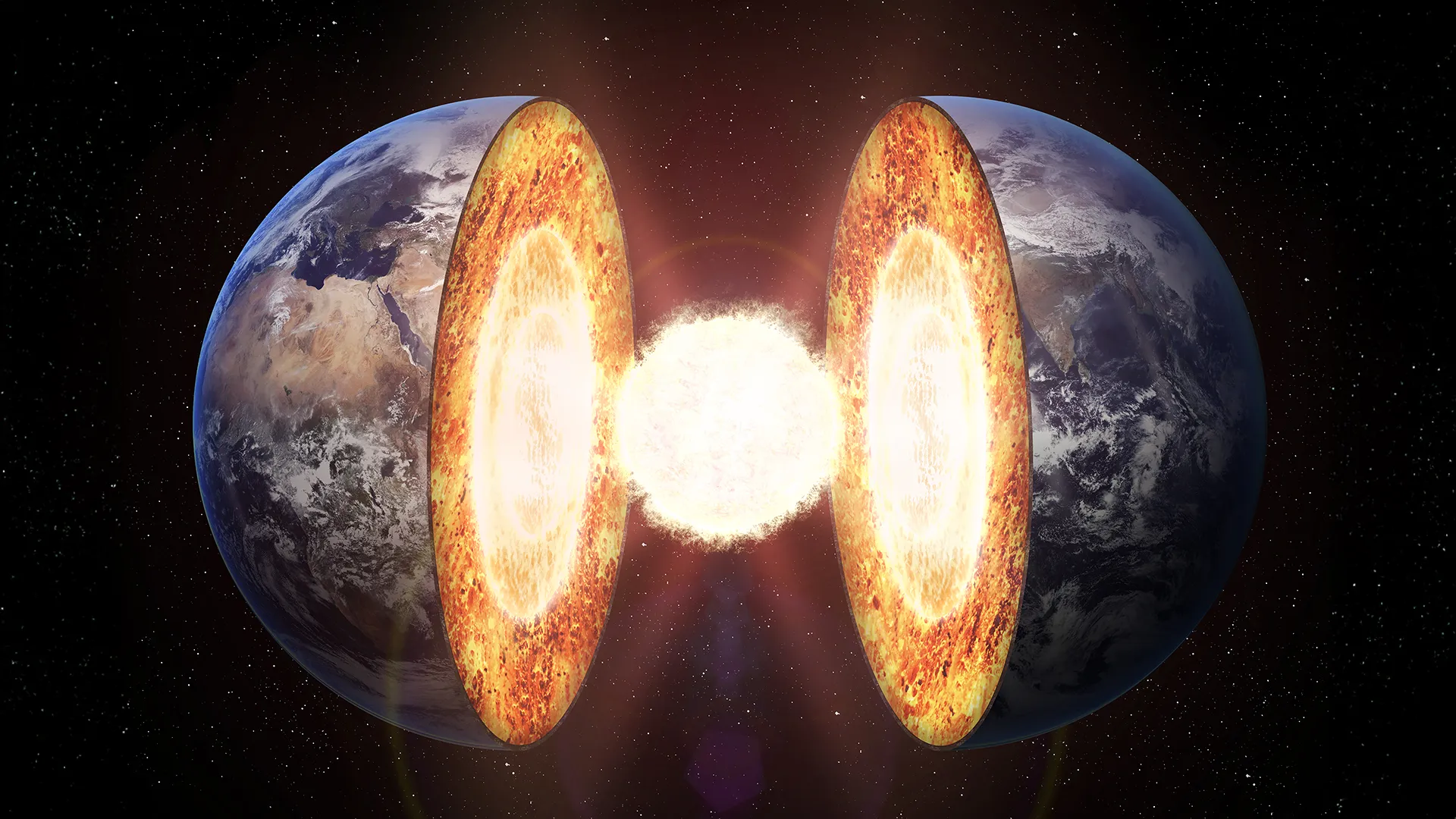President Trump just passed 100 days in office.
In the first hours of his second term, he withdrew the United States from the Paris climate agreement and the World Health Organization.
Since then, Mr. Trump’s administration has slashed budgets for federal science and health agencies, fired federal scientists, censored research and threatened universities, and dismissed hundreds of volunteer scientists who were preparing an important update to the country’s flagship climate assessment. The president has said his goals are to minimize the regulations that have stifled industry, and to promote more energy production, which he sees as central to economic growth. The president has said he wants the cleanest water and air while also drilling, mining and burning more oil, gas and coal.
Against that backdrop, on Earth Day, the White House posted a page on its website titled, “We Finally Have a President Who Follows Science.”
The New York Times annotated a selection of the statements on that page. The White House did not respond to a detailed list of questions.


New York Times Analysis
Next »
1
The Trump administration is planning to relax or repeal pollution standards on cars, power plants and chemical facilities, as well as overturn limits on soot from smokestacks, which has been linked to respiratory problems in humans and premature deaths. It is also planning to loosen or eliminate restrictions on emissions of mercury, a neurotoxin. And, the Environmental Protection Agency has also said it would rollback a rule that provides federal protections for rivers, streams and wetlands.
2
President Trump often refers to things related to climate change and clean energy as part of the “Green New Scam.” That appears to be a reference to the Green New Deal, a resolution introduced in 2019 by Representative Alexandria Ocasio-Cortez of New York and Senator Edward J. Markey of Massachusetts, both Democrats, that never passed into law.

New York Times Analysis
« Previous Next »
3
Mr. Trump expanded federal subsidies for some clean energy projects, including carbon capture, during his first term. Those supports were expanded further under the bipartisan infrastructure law and Inflation Reduction Act, which were signed by President Biden in 2021 and 2020. Both laws pour billions of dollars into carbon capture and storage, nuclear and geothermal energy.
4
Mr. Trump signed executive orders in January intended to make it easier and cheaper for companies to produce oil and gas, the burning of which is dangerously heating the planet, and for the government to stop clean-energy projects that have been approved. In mid-April, the Trump administration ordered a halt to the Empire Wind project, which was designed to provide enough renewable electricity to power about 500,000 homes in New York.
5
Total U.S. greenhouse gas emissions decreased during President Trump’s first term, from 2017 to 2021. Carbon dioxide emissions were relatively flat from 2017 to 2019. They decreased sharply in 2020, but that was because of COVID-19 shutdowns.

New York Times Analysis
« Previous Next »
6
Selective tree thinning and the removal of diseased trees and undergrowth during logging, if done carefully, can reduce the risk of fire in some settings. But cuts made by the Trump administration to the U.S. Forest Service could also hamper the country’s ability to manage forests responsibly while climate change continues to increase the likelihood of wildfires.

New York Times Analysis
« Previous Next »
7
It’s true that paper straws can contain PFAS. Environmental groups say a much bigger issue, though, is the presence of PFAS in drinking water. The Biden administration set strict new federal standards on PFAS in drinking water last year, but industry and utility groups have sued the federal government to roll them back. It’s unclear what the Trump administration will do.
8
Manufacturing paper straws can have a higher carbon footprint and use more water than plastic straws. But plastic straws are a significant source of litter, because they take a very long time to break down, and they shed harmful microplastics. The production of plastic also releases planet-warming greenhouse gases and other dangerous pollutants.

New York Times Analysis
« Previous Next »
9
Loosening E.P.A. limits on emissions from coal, the dirtiest fossil fuel, is at odds with maintaining environmental standards and the administration’s claim that it is leveraging environmental policies to ensure clean air. Burning more coal with fewer restrictions would increase carbon dioxide, which is a top driver of global warming, as well as mercury, particulate matter and other pollution that is linked to health problems and premature deaths.

New York Times Analysis
« Previous Next »
10
Although the United States produces more energy than it consumes, The Trump administration said it would fast-track approvals of drilling and mining on public lands, cutting the time spent on required environmental reviews before issuing permits for those projects. Reviews that typically take a year to complete would be finished in 14 days, officials said. The administration also plans to sell public lands for housing, something that environmental groups say could harm endangered species habitats.

New York Times Analysis
« Previous Next »
11
Deforestation in the Amazon is at its lowest level in nine years, according to data from Brazil’s national space research institute, INPE.

New York Times Analysis
« Previous Next »
12
One reason for China’s significant emissions is its continued reliance on coal, an energy source that has been declining in the United States but that President Trump is trying to revive.
13
The Reuters article referenced here also notes that “the United States was the only rich industrialized nation in the top 20 polluters.”
14
The Trump administration shuttered the State Department’s Office of Global Change, where diplomats had been pushing China to reduce its coal use. Those talks have now effectively ended.

New York Times Analysis
« Previous
15
The Trump administration is weakening many regulations that protect a variety of vulnerable animals and plants. One example that has especially alarmed conservationists is a proposal to make it easier to destroy habitat that endangered species rely on.
16
While it’s true that wind turbines kill some bats and birds, they also supply clean energy needed to transition humans away from planet-warming fossil fuels. Climate change is a major driver of biodiversity loss, and scientists warn that it will wreak even more damage to species in coming decades.




